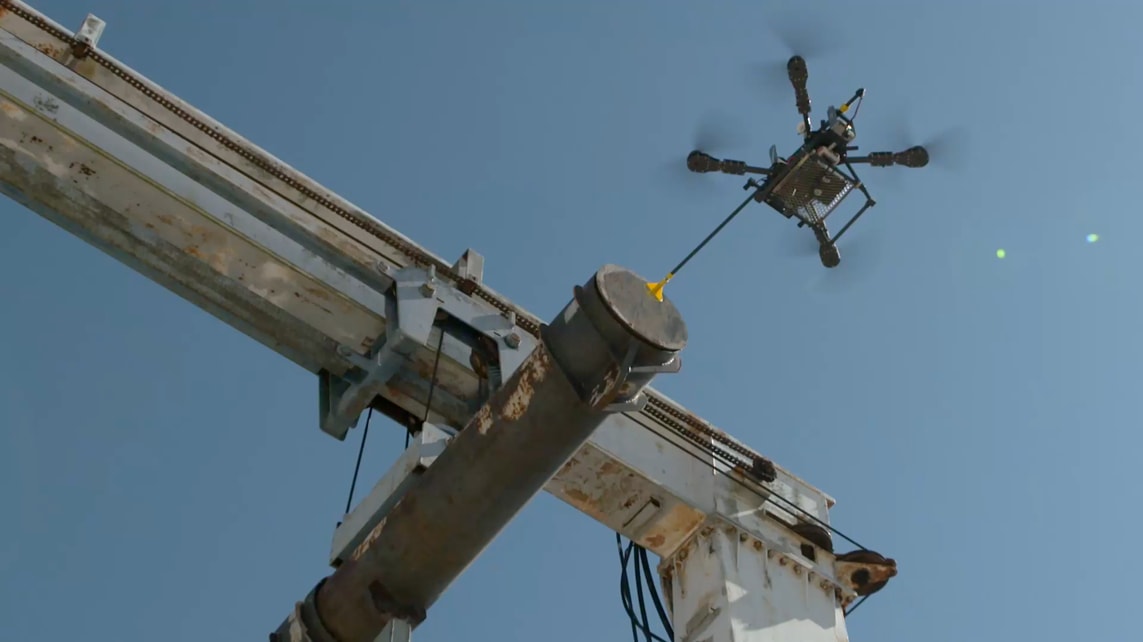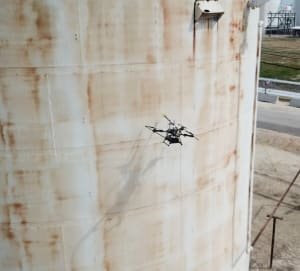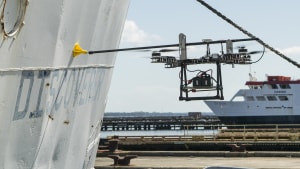Guest
on 14 November 2018

This is a guest blog by Jamie Branch, Corrosion Engineer at Apellix.
In the United States alone, 849 workers lost their lives in 2016 from falling while on the job. In the construction industry specifically, falls are the leading cause of worker fatality. At Apellix, we utilise Ubuntu and proprietary software to create innovative industrial solutions to keep workers safe. By developing aerial robotic technology, customised drones can now perform work at heights, allowing human workers to remain safely on the ground.
Aerial Robotic Systems
There are drones and then there are aerial robotics. An aerial robotic system is a computer-controlled drone with an articulating robotic arm and hand (i.e: end effector). These systems can increase safety by removing workers from heights. Apellix has engineered a patented aerial robotic system capable of precision flight, allowing the aircraft to contact a structure and perform work (see video below). The end effector used by Apellix is equipped with various inspection probes which gather important corrosion and material condition data that is critical for safe, continuous operation of the structure being measured. Operational data, environmental data, and measurement data are transferred in real time to a laptop or tablet on the ground, so readings are viewable as they are performed. Each robotic system also has a cell modem to optionally enable data to be sent to a secure internet portal. The portal allows users to log in and view data, create reports, and download files.
Other aerial robotic systems may, in limited conditions, allow a pilot to contact a structure for a brief moment with manual flight. However, Apellix aerial robotic systems are capable of autonomous flight while close to and in contact with a structure. Autonomous flight describes the aircraft’s ability to programmatically perform tasks and functions without the assistance of human navigation. By adding a sensor array, a custom-designed circuit board (PCB backplane and blades) with embedded programming, and software running on the industry-standard Ubuntu operating system, we can systematically and repeatedly fly in and contact a structure to gather data — all without a pilot. In addition to computer-controlled take-off and landing, the aircraft autonomously approaches and contacts the testing surface. This software-controlled feature is especially important when contacting structures with an airborne probe, as human vision and depth perception may not be adequate for such precision flying. Developing a robotics application requires a high level of stability and flexibility in terms of building a platform that allows changes or adjustments to the different features without any malfunction. Ubuntu is well suited to develop such an application which is then robust, stable, responsive and has a high level of security. Its active user community support facilitates development and its Core variant is well suited for light on-board computers for aerial robots. It is also the default environment with NVIDIA’s L4T on the Jetson TX2, which has been used to handle heavy graphics processing on aerial robots.
Safety
Using aerial robotic devices provides a safer occupational environment for workers. It reduces the dangers associated with scaffolding, personal falls, and moving heavy lift equipment. Workers and inspectors can perform their jobs safely on the ground while the aerial robotic device performs the work at height. The robotic systems gather data quicker than a human, reducing the time required for an inspection and often resulting in a more cost-effective job. The images below show examples of how aerial robotic systems are used in a number of industrial settings.



Conclusion
Using aerial robotics affords the operator an opportunity to safely perform industrial work at height. This novel approach improves the safety of workers and highlights how critical software is. By adding software control to aerial robotics, a new computer-controlled industrial tool capable of autonomously performing work has been created.
To find out more about how using software can solve industrial IoT challenges, register for Apellix’s webinar on 5th December 2018 by clicking here.
Source of Fall Statistics:
National Census of Fatal Occupational Injuries in 2016. Bureau of Labor Statistics, U.S.



